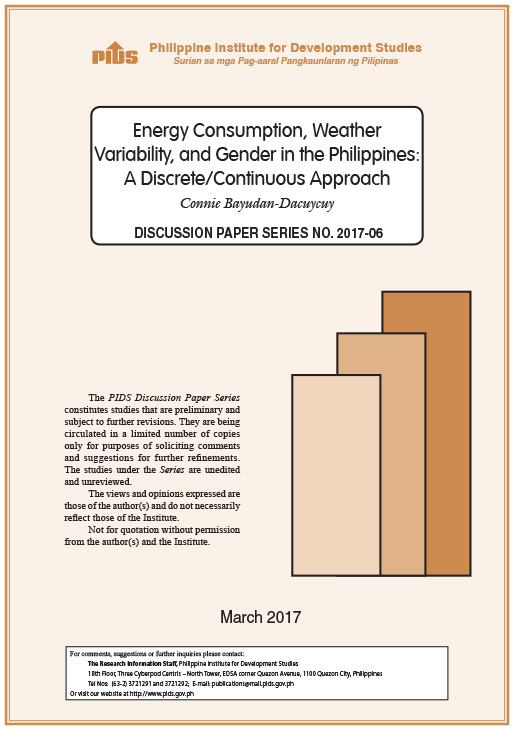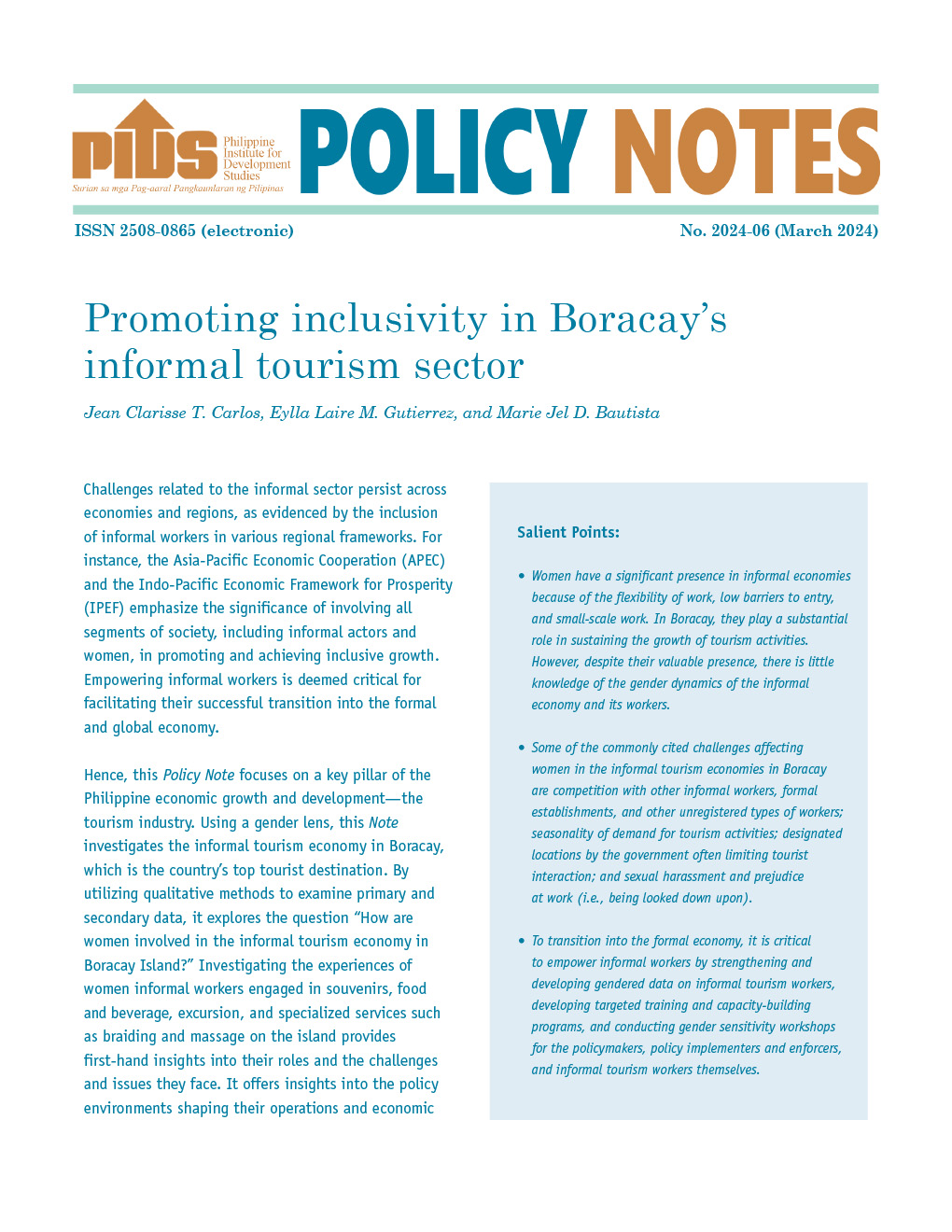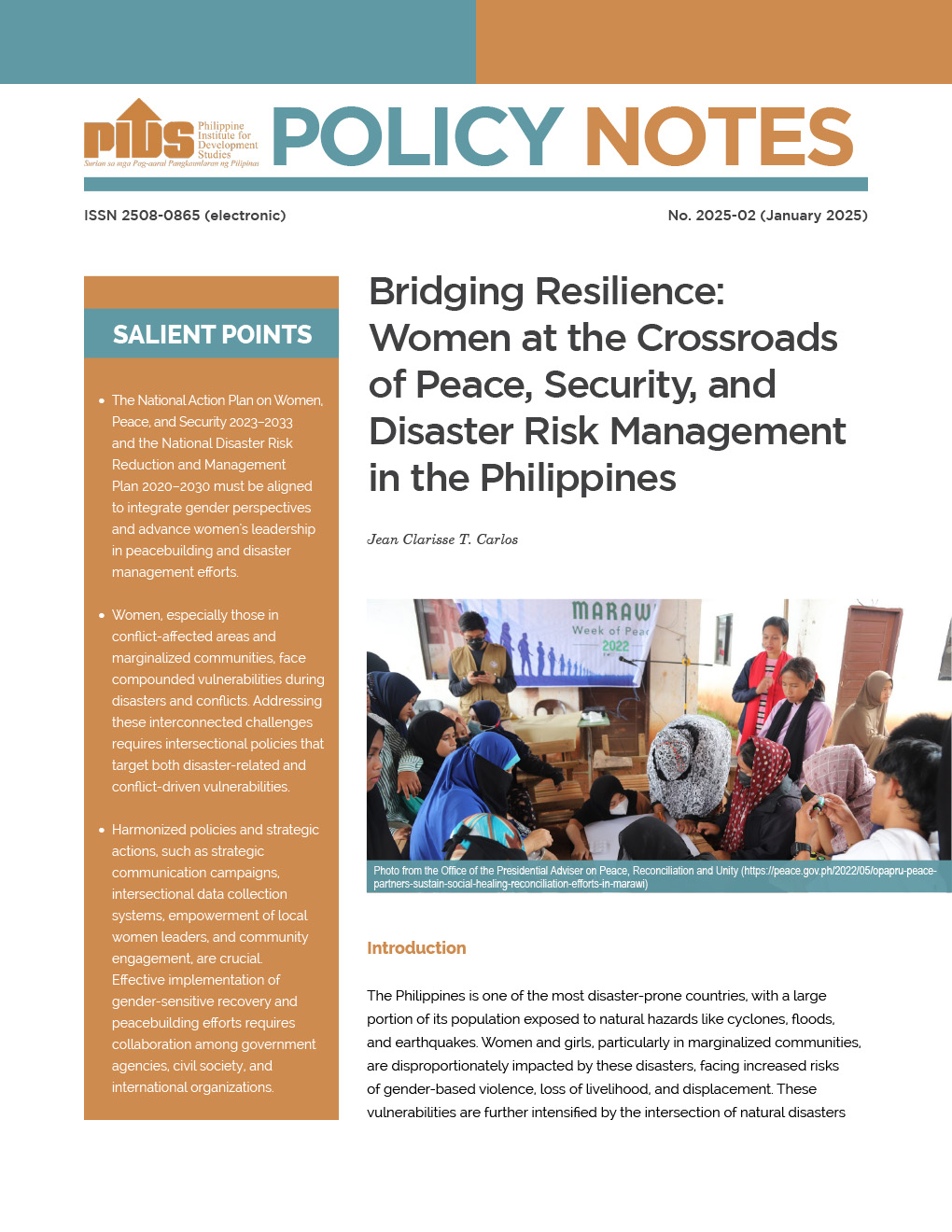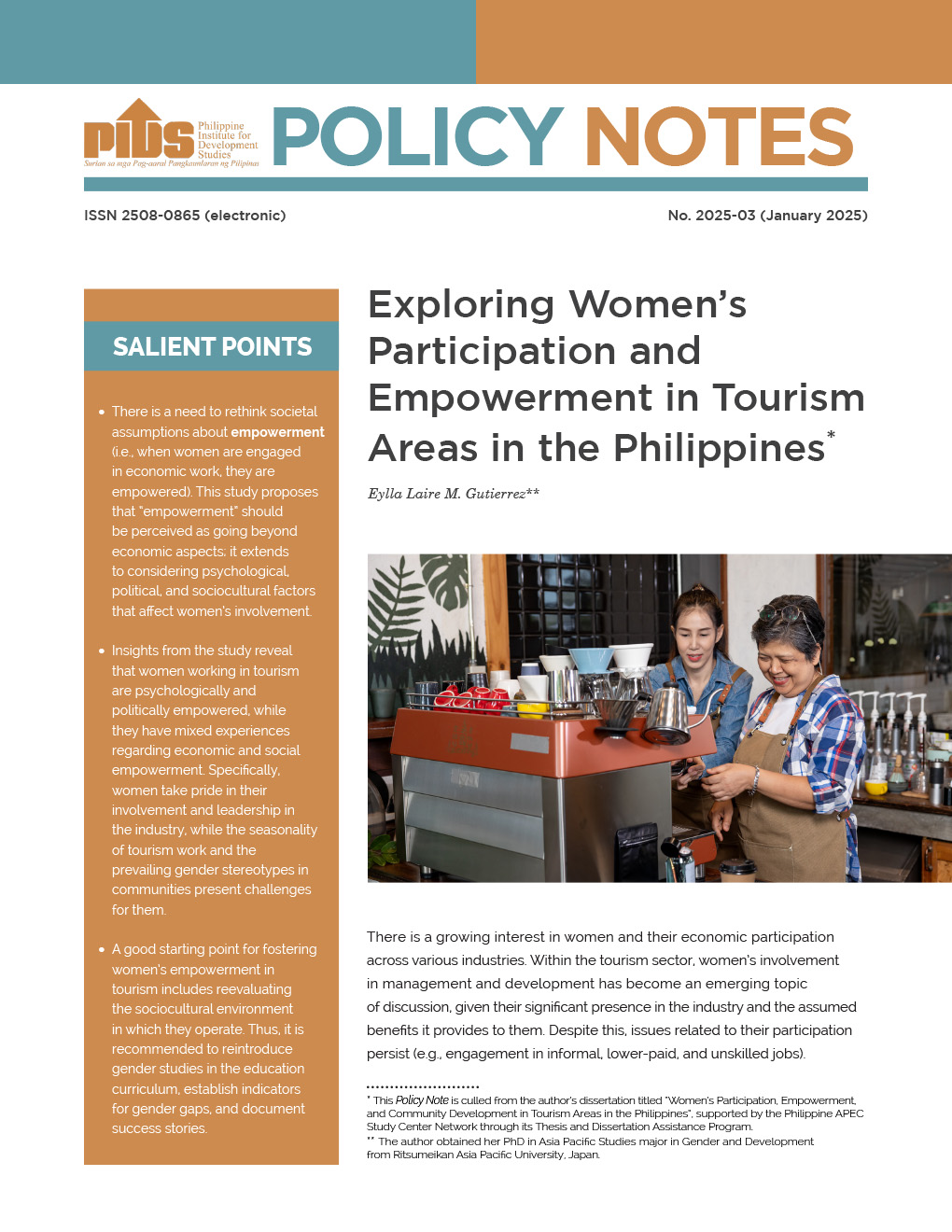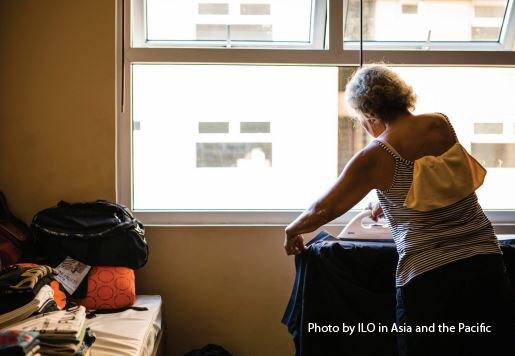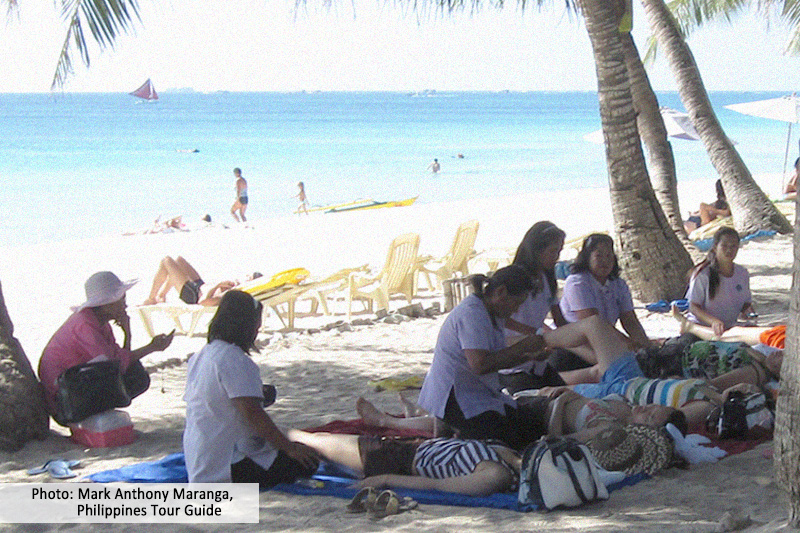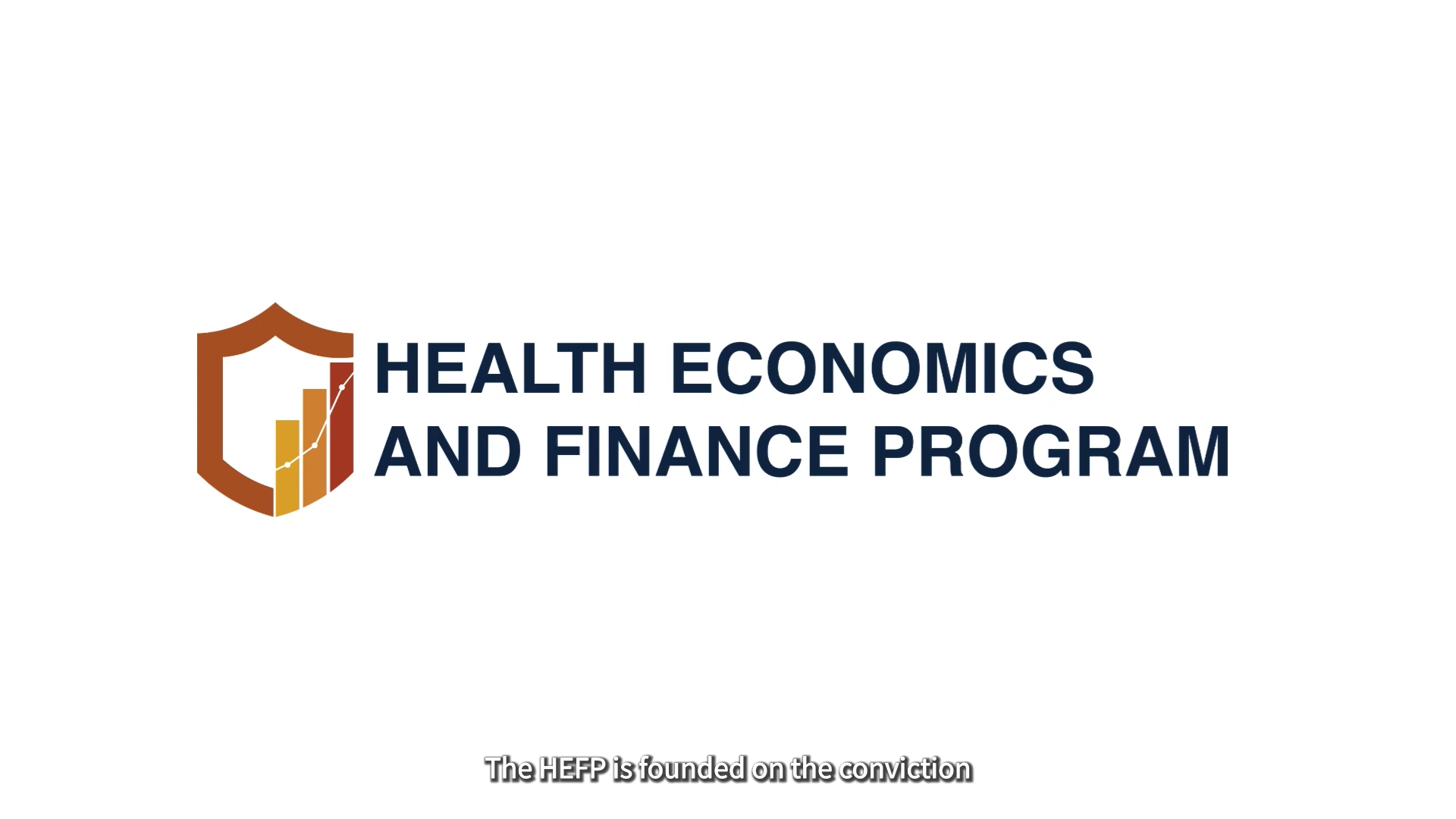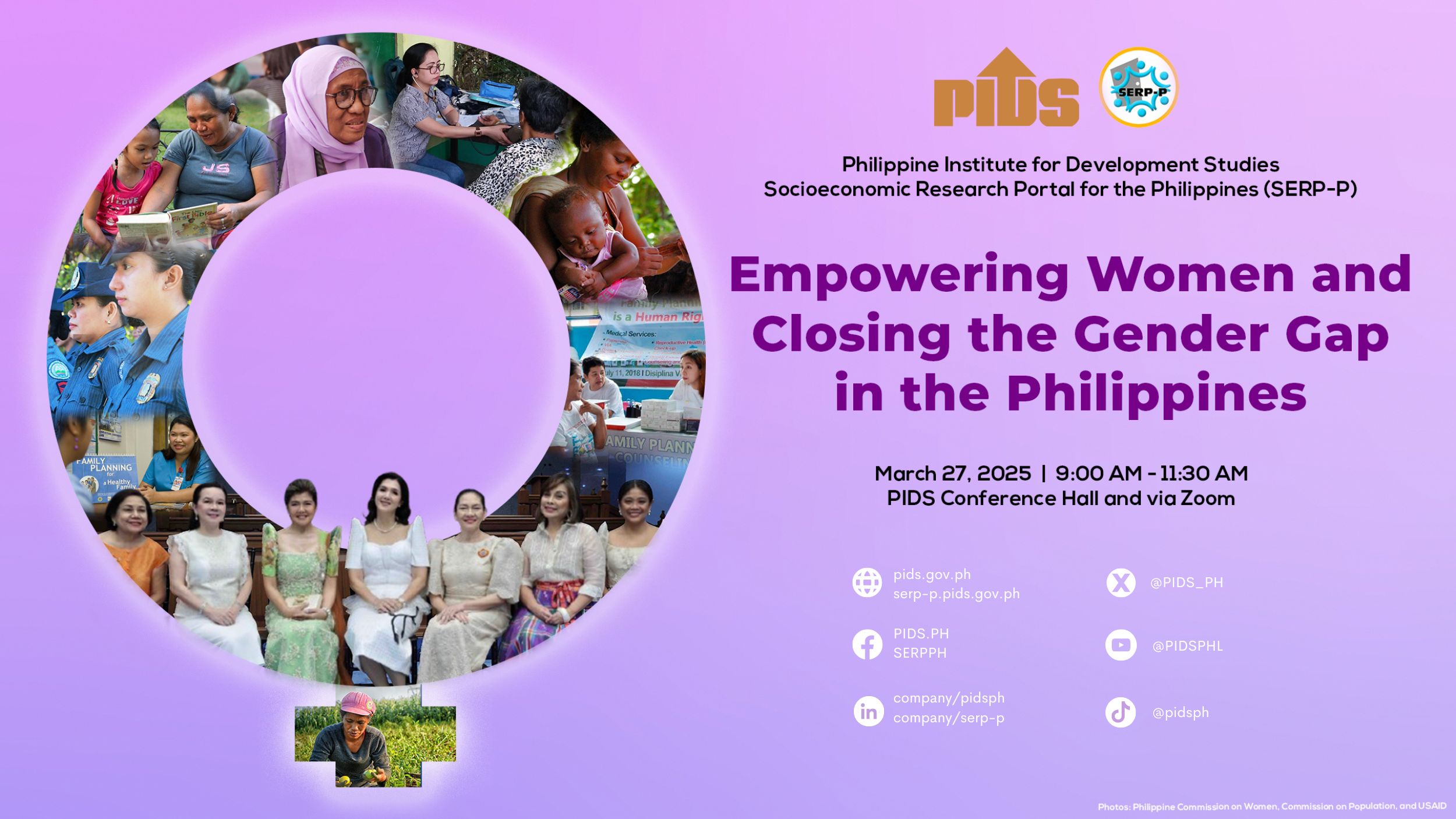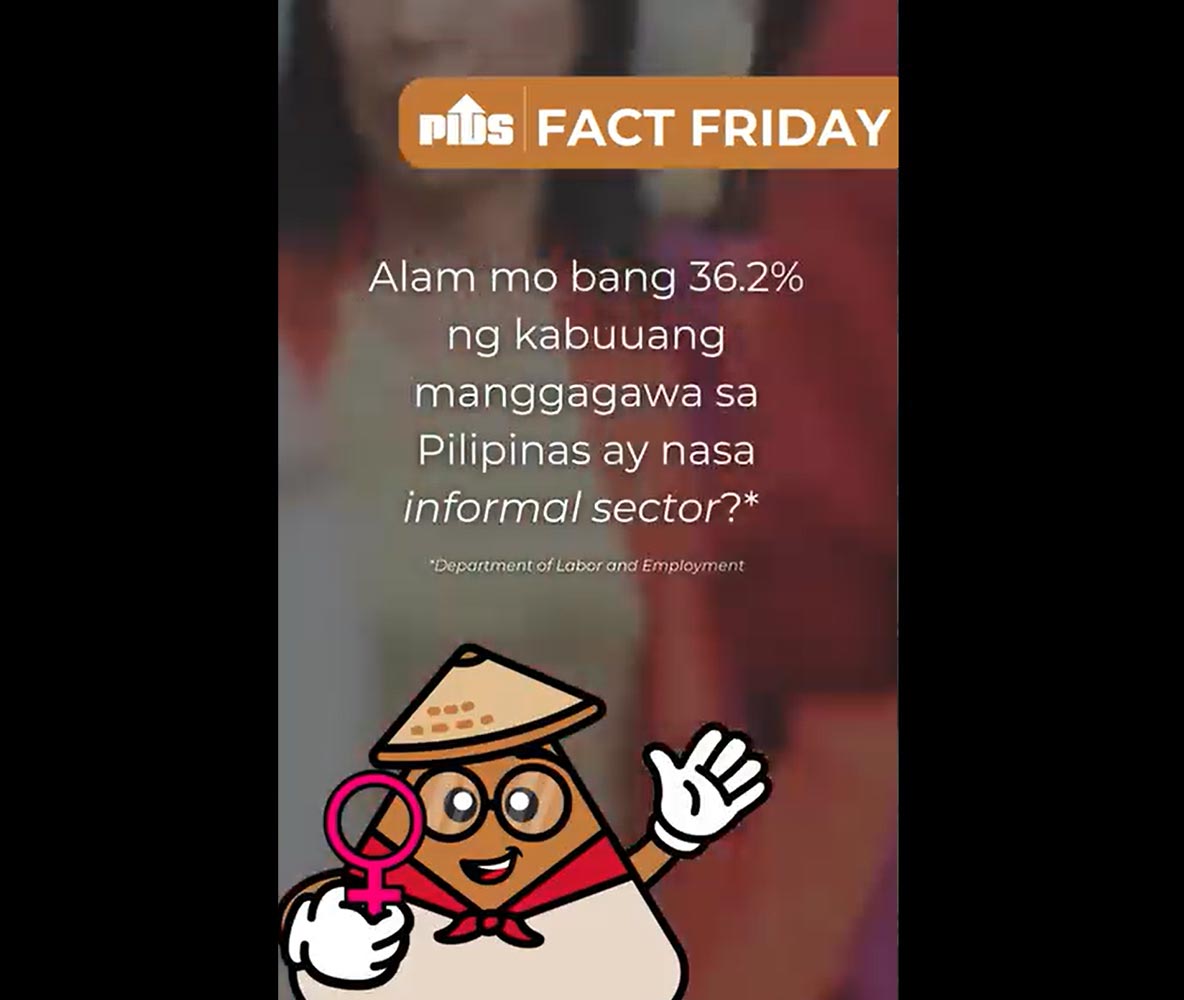Using a discrete/continuous modeling approach, this paper analyzes energy use and consumption in the Philippines within the context of weather variability and gender. Consistent with energy stacking strategy where households use a combination of traditional and modern energy sources, this paper finds that households use multiple energy sources in different weather fluctuation scenarios. It also finds that weather variability has the highest effects on the electricity consumption of balanced and female-majority households that are female headed and in rural areas. Several policies are suggested.
Citations
This publication has been cited 8 times
- Bayudan-Dacuycuy, Connie and Lora Baje. 2017. . Working Papers id:12071. eSocialSciences.
- Bayudan-Dacuycuy, Connie and Lawrence B. Dacuycuy. 2018. . Working Papers id:12855. eSocialSciences.
- Bayudan-Dacuycuy, Connie and Lora Baje. 2017. . Working Papers id:12072. eSocialSciences.
- Bayudan-Dacuycuy, Connie and Lora Kryz C. Baje. 2017. . Working Papers id:12307. eSocialSciences.
- Bayudan-Dacuycuy, Connie and Lora Kryz C. Baje. 2019. . Social Indicators Research: An International and Interdisciplinary Journal for Quality-of-Life Measurement, 145, no. 1, 67-93. Springer.
- Bayudan-Dacuycuy, Connie and Lora Kryz C. Baje. 2018. . Discussion Papers DP 2018-32. Philippine Institute for Development Studies.
- Dacuycuy, Connie B. and Lawrence B. Dacuycuy. 2018. . Discussion Papers DP 2018-01. Philippine Institute for Development Studies.
- Junlakarn, Siripha. 2021. . Renewable and Sustainable Energy Reviews, 145(C). Elsevier.

